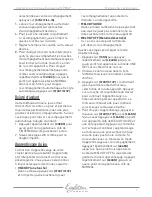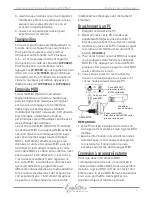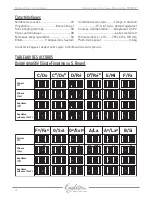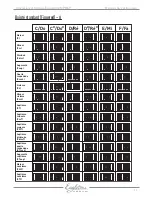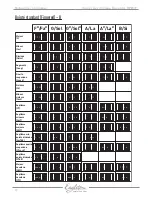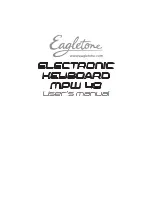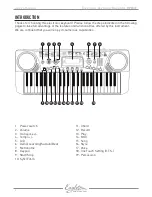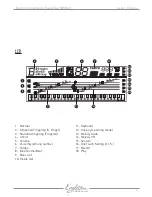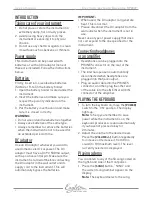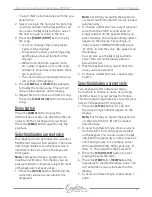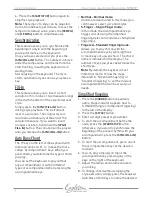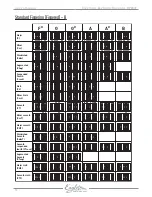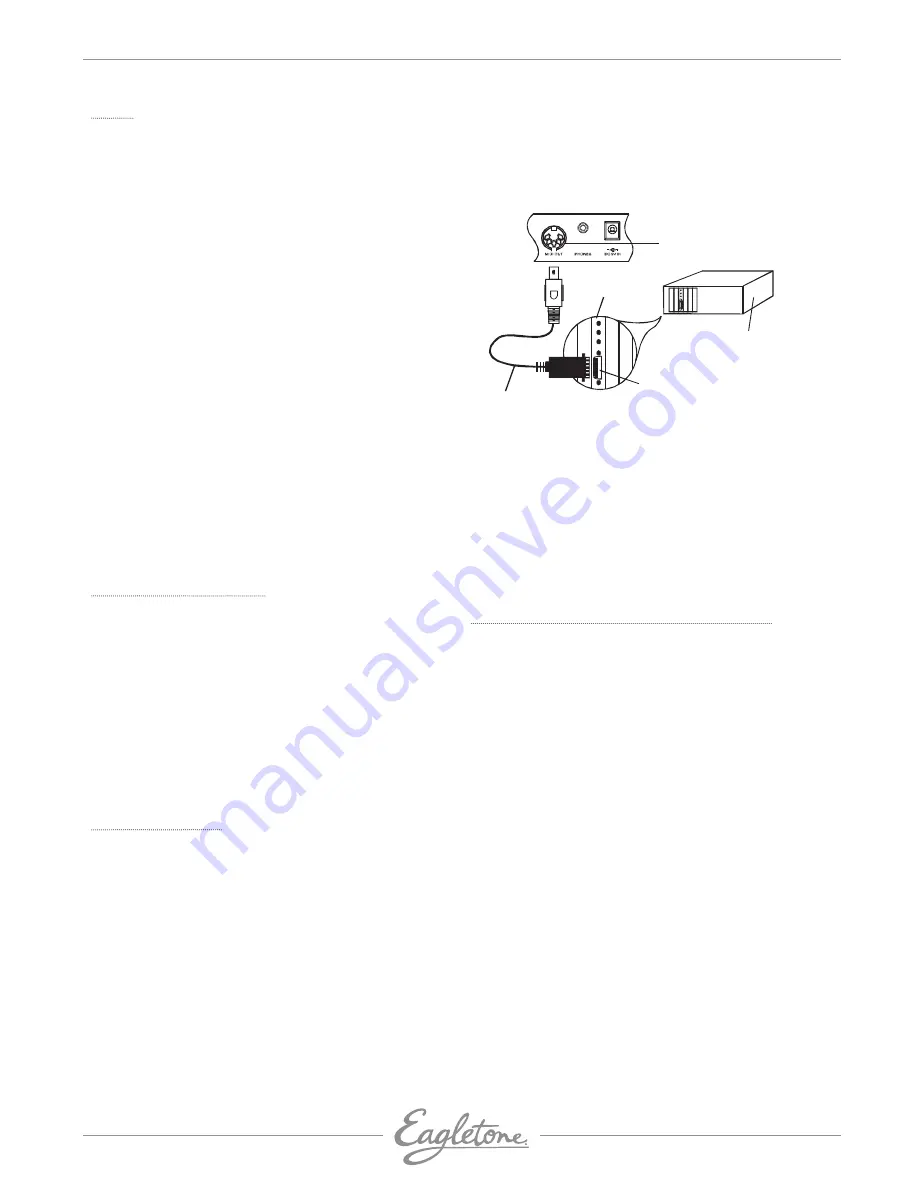
eagletone.com
9
Electronic keyboard Eagletone MPW49
User’s manual
MIDI
MIDI (Musical Instrument Digital Interface)
is the universal standard allowing multiple
digital instruments, computers and other
related devices to communicate and
exchange playing data.
The MIDI OUT port sends MIDI data to an
external MIDI device. The instruments
communicate by sending MIDI messages
or data. The emitting instrument assigns
the data to one of the 16 MIDI channels and
then transmits them through MIDI cables.
The cable in itself is not divided into or made
up of 16 different wires but, like a television
set receiving numerous programs over
different channels from the same aerial, the
instrument’s task is to be set to the right MIDI
channel. If the Send and Receive channels of
the instruments connected to each other do
not match, the receiving instrument cannot
understand nor play the sender’s messages.
Connecting to a PC
1. Turn off both keyboard and PC.
2. Use a MIDI adaptor to link the keyboard to
the PC (one side features 5 pins, the other
15).
3. Switch on the keyboard and the PC. Set the
volume at its minimum level by using the
[v
olume -] button.
4. To select the desired MIDI channel (01-16),
press the
[midi]
button repeatedly until the
desired channel appears on the display.
5. You can play the keyboard. You will hear
the music play on your PC loudspeakers.
MIDI cable
Soundcard equipped
with a MIDI port
Joystick/MIDI port
Plug the MIDI cable into
the soundcard via this port
PC (rear panel)
MIDI OUT connector
Plug the MIDI cable
into this connector
note:
• Your PC must be equipped with a
soundcard, a pair of speakers and MIDI
software must be installed.
• No information regarding styles,
pre-recorded songs, sustain and transpose
values is sent as MIDI data.
Connecting to an external device
Two MIDI devices must be connected to each
other with MIDI cables in order to be able
to communicate. To take a basic example: if
you want to record your performance on this
keyboard, the MIDI OUT connector of this
keyboard must be connected to the MIDI IN
connector of a sequencer.
Specifications
Number of keys .............................................. 49
Polyphony ..................................... 8 notes (max)
Preset voices .................................................. 50
Preset styles ................................................... 30
Preset songs ................................................... 50
Effects ................................ Transpose, Sustain
Style commands .......................... Tempo, Sync,
................................................Fill-in, Start/Stop
Power supply ..................DC 9V power adaptor
.............................................C-size batteries x 6
Size (W x D x H) ...................795 x 315 x 120mm
Weight (without batteries) ........................3.6kg
All specifications and design are subject to change without prior notice.

